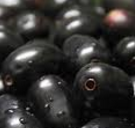Scientists at IIT Create Low Cost Solar Cells using Jamun
Scientists at IIT Roorkee have used Indian summer fruit, Jamun, to create low cost and more efficient solar cells. To create the solar cells, the researchers made use of naturally occurring pigment present in jamun as an inexpensive photosensitizer for Dye Sensitised Solar Cells (DSSCs) or Gratzel cells. Gratzel cells are nothing but thin film solar cells made of a porous layer of titanium dioxide (TiO2) coated photoanode, a layer of dye molecules that are capable of absorbing sunlight, an electrolyte for regenerating the dye, and a cathode. The above components of the Gratzel cell form a sandwich-like structure with the dye molecule playing a crucial role through its ability to absorb visible light.
Researchers made use of ethanol to extract the dyes from jamun. The extracted coloured pigment called anthocyanin was used as a sensitiser. The research got published in the Journal of Photovoltaics.
Significance
Natural pigments are cheaper in comparison to regular Ruthenium-based pigments to create solar cells. The research like this assumes importance at the backdrop of increasing pressure on fossil fuels and concern about global warming. It will also augment in realizing the country’s vision of building up a 40% share of non-fossil fuel capacity in the power sector by 2030.
Month: Current Affairs - May, 2017


